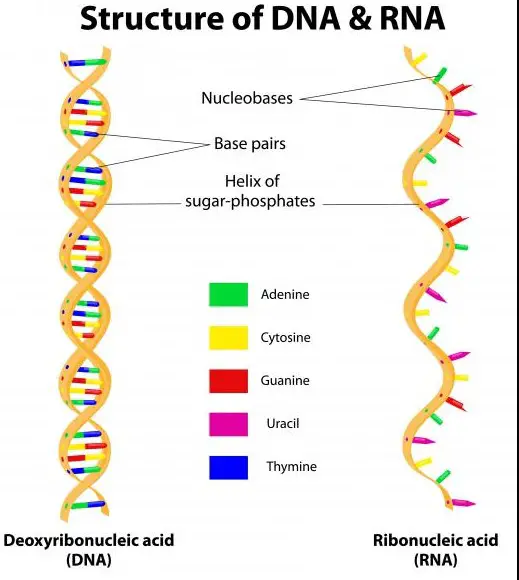The realm of organic chemistry is vast and complex, with myriad compounds that have similar sounding names but vastly different characteristics and applications. Among these, formamide and formaldehyde stand out due to their widespread use in various industries. Despite their similar nomenclature, these compounds differ significantly in their chemical structure, properties, and applications.
Formamide is a colorless liquid, primarily used as a solvent in the synthesis of pharmaceuticals, plastics, and fibers, whereas formaldehyde is a gas at room temperature, known for its preservative qualities and as a building block in the production of resins and plastics. The key difference between formamide and formaldehyde lies in their chemical structures; formamide has the formula HCONH2, while formaldehyde is represented by H2CO.
The distinctions between formamide and formaldehyde extend beyond their molecular formulae to include differences in physical properties, production methods, uses, and health implications. These differences highlight the importance of understanding each compound’s unique characteristics to ensure their safe and effective application in various industrial and manufacturing processes.

Basic Definitions
Formamide
Chemical Structure and Formula
Formamide, denoted by the chemical formula HCONH2, features a simple structure with a carbonyl group attached to an amide group. This arrangement grants formamide unique properties, distinguishing it from other organic compounds. Its molecular structure consists of a carbon atom double-bonded to an oxygen atom (carbonyl group) and single-bonded to a nitrogen atom, which in turn is bonded to two hydrogen atoms (amide group).
Physical Properties
The physical properties of formamide make it an intriguing substance. It is a colorless liquid at room temperature, with a high boiling point of approximately 210°C. Formamide has a polar nature, which allows it to dissolve a wide range of compounds, making it an excellent solvent. It is also hygroscopic, meaning it can absorb moisture from the air.
Formaldehyde
Chemical Structure and Formula
Formaldehyde, with the formula H2CO, is the simplest form of aldehyde. It consists of a carbon atom double-bonded to an oxygen atom (forming the aldehyde group) and single-bonded to two hydrogen atoms. This structure is foundational in organic chemistry due to its reactivity, allowing formaldehyde to participate in a multitude of chemical reactions.
Physical Properties
Unlike formamide, formaldehyde is a gas at room temperature and has a sharp, pungent odor. It is highly soluble in water, alcohol, and other solvents, forming formalin when dissolved in water, a solution commonly used as a disinfectant and preservative. Formaldehyde’s volatility and reactivity are key to its widespread use in industrial applications.
Production Methods
Formamide Production
Industrial Synthesis
The production of formamide industrially is primarily through the hydration of hydrogen cyanide (HCN). This process involves reacting hydrogen cyanide with water in the presence of a catalyst, such as sulfuric acid, under controlled conditions. The reaction yields formamide and is carefully managed to avoid unwanted byproducts.
Applications in Manufacturing
Formamide’s role as a solvent is crucial in the manufacturing of pharmaceuticals, plastics, and fibers. Its ability to dissolve many organic and inorganic substances makes it an invaluable component in the synthesis of a wide range of materials. Moreover, formamide is used in the production of softeners, plasticizers, and as a deicing agent.
Formaldehyde Production
Industrial Synthesis
Formaldehyde is typically produced through the oxidation of methanol. In this process, methanol vapor is passed over a metal oxide catalyst at high temperature, facilitating the conversion of methanol to formaldehyde. This reaction is exothermic and requires precise control to optimize yield and minimize energy consumption.
Applications in Manufacturing
The applications of formaldehyde are vast and varied, reflecting its versatility as a chemical building block. It is a key ingredient in the production of resins, such as urea-formaldehyde and phenol-formaldehyde, used extensively in the construction and automotive industries. Formaldehyde-based resins are pivotal in manufacturing particleboard, plywood, and insulation materials. Additionally, formaldehyde serves as a preservative in cosmetics and as a sterilizing agent in medical laboratories.
Chemical Properties
Reactivity
Formamide Reactions
Formamide undergoes several reactions that exploit its unique chemical structure. It can act as a source of ammonia in certain reactions, participate in dehydration processes to form hydrogen cyanide, and undergo hydrolysis to produce formic acid and ammonia. These reactions are fundamental in organic synthesis and analytical chemistry.
Formaldehyde Reactions
Formaldehyde is known for its high reactivity, particularly its ability to polymerize and participate in condensation reactions. It forms polymers and resins when reacted with phenols, urea, and melamine, a property utilized in creating adhesives and molding compounds. Moreover, formaldehyde can undergo addition reactions with compounds containing active hydrogen atoms, forming hydroxymethyl derivatives.
Stability
Environmental Conditions Impact
Both formamide and formaldehyde exhibit different stability profiles under various environmental conditions. Formamide is relatively stable but can decompose at high temperatures or in the presence of strong acids or bases. Conversely, formaldehyde is volatile and can polymerize if not stabilized, necessitating careful storage and handling.

Uses and Applications
Formamide Uses
Industrial Solvents
Formamide serves as an excellent solvent due to its ability to dissolve both ionic compounds and a wide range of organic molecules. This property makes it indispensable in the production of fibers, plastics, and films. Its unique ability to lower the viscosity of polymer solutions without compromising their stability is particularly valued in the manufacture of high-quality, high-performance materials.
Pharmaceuticals
In the pharmaceutical industry, formamide is used as a solvent in the synthesis of drugs. It facilitates various chemical reactions that are crucial in creating a wide array of medicinal compounds. Formamide’s role in enhancing the solubility of pharmaceuticals significantly impacts the effectiveness and delivery of drugs, making it a key component in drug formulation and development.
Formaldehyde Uses
Preservatives
Formaldehyde’s potent antimicrobial properties make it a common preservative in medical laboratories and mortuaries. It is used to preserve biological specimens and in embalming fluids, preventing decay and maintaining tissue integrity. This use is crucial for both educational purposes and in medical research, where accurate anatomical details are essential.
Resin Production
One of the most significant uses of formaldehyde is in the production of resins. It reacts with urea, phenol, and melamine to produce urea-formaldehyde, phenol-formaldehyde, and melamine-formaldehyde resins, respectively. These resins are foundational materials in the construction and automotive industries, used in adhesives, coatings, and foam insulation. Their durability, water resistance, and adhesive properties have made them indispensable in modern manufacturing processes.
Health and Safety Concerns
Formamide Safety
Exposure Risks
Exposure to formamide, especially in its vapor form, can pose health risks including irritation to the eyes, skin, and respiratory system. Long-term exposure might lead to more severe health issues, necessitating careful handling and use of appropriate safety measures.
Handling Guidelines
- Use in well-ventilated areas to minimize inhalation risks.
- Wear protective clothing, including gloves and eye protection, to avoid skin and eye contact.
- Store properly in tightly sealed containers away from sources of heat and direct sunlight to prevent degradation.
Formaldehyde Safety
Exposure Risks
Formaldehyde is classified as a carcinogen by various health organizations. Exposure can cause respiratory difficulties, skin irritation, and is linked to cancer with long-term exposure. Its volatile nature increases the risk of inhalation, making it one of the more hazardous chemicals in industrial and laboratory settings.
Handling Guidelines
- Ensure adequate ventilation in areas where formaldehyde is used or stored.
- Use personal protective equipment (PPE), including respirators, to protect against inhalation.
- Implement spill containment measures to manage accidental releases safely and effectively.
Environmental Impact
Formamide
Biodegradability
Formamide is considered biodegradable, meaning it can be broken down by microorganisms into simpler, less harmful substances. This characteristic mitigates some of the environmental concerns associated with its use, although it does not eliminate the need for responsible handling and disposal practices.
Environmental Risks
Despite its biodegradability, formamide’s release into the environment should be minimized. It can pose risks to aquatic life if large quantities enter water bodies. Proper disposal and treatment of waste containing formamide are essential to prevent potential environmental damage.
Formaldehyde
Toxicity Levels
Formaldehyde’s toxicity is a significant concern for both human health and the environment. It is toxic to aquatic organisms and can contribute to air pollution. Its presence in the environment needs to be closely monitored to manage its impact effectively.
Regulations and Control
To mitigate the environmental and health risks associated with formaldehyde, stringent regulations have been implemented in many countries. These regulations govern its use, storage, and disposal, ensuring that emissions are minimized and exposure levels do not exceed safe limits.
Comparison Summary
Key Differences Highlighted
The primary distinction between formamide and formaldehyde lies in their chemical structure and physical properties. Formamide is a liquid solvent used extensively in the pharmaceutical and manufacturing industries, while formaldehyde is a gas used as a preservative and in resin production. Their applications, health and safety concerns, and environmental impacts further delineate the differences between these two compounds.
Decision-making in Application
When choosing between formamide and formaldehyde for industrial or laboratory applications, several factors must be considered:
- Specific application needs: The choice depends on whether the requirement is for a solvent, preservative, or resin production.
- Health and safety protocols: Considering the toxicity and safety measures associated with each compound is crucial.
- Environmental impact: The biodegradability of formamide might make it a preferable choice in scenarios where environmental concerns are paramount.
FAQs
What is Formamide?
Formamide, with the chemical formula HCONH2, is a colorless liquid used as a solvent in the production of pharmaceuticals, plastics, and fibers. It has a high boiling point and acts as an intermediate in various chemical syntheses.
How is Formaldehyde used?
Formaldehyde is widely used as a preservative in medical laboratories and mortuaries, and as a component in the manufacture of resins, textiles, and plastics. Its applications stem from its properties as a potent cross-linking agent.
Can Formamide and Formaldehyde be Interchanged?
No, formamide and formaldehyde cannot be interchanged. Their distinct chemical structures and properties mean they serve different purposes in industrial and chemical processes. Formamide is primarily a solvent and an intermediate, while formaldehyde is used for preservation and as a building block in polymer production.
Are Formamide and Formaldehyde Dangerous?
Both compounds can pose health risks if not handled properly. Formaldehyde is classified as a carcinogen, and prolonged exposure can lead to serious health issues. Formamide also requires careful handling due to its potential toxicity. Safety protocols must be strictly followed when working with these chemicals.
Conclusion
The exploration of formamide and formaldehyde reveals the intricacies of organic chemistry and the critical importance of understanding the properties and applications of chemical compounds. Their distinct differences underscore the necessity of precise knowledge in the chemical and manufacturing industries to harness their potential while mitigating risks.
As we continue to navigate the complexities of these substances, it becomes clear that the advancement of science and technology relies on our ability to discern and utilize the unique characteristics of each compound. In doing so, we not only ensure safety and efficiency but also open the door to innovations that can benefit various sectors and ultimately, society at large.

